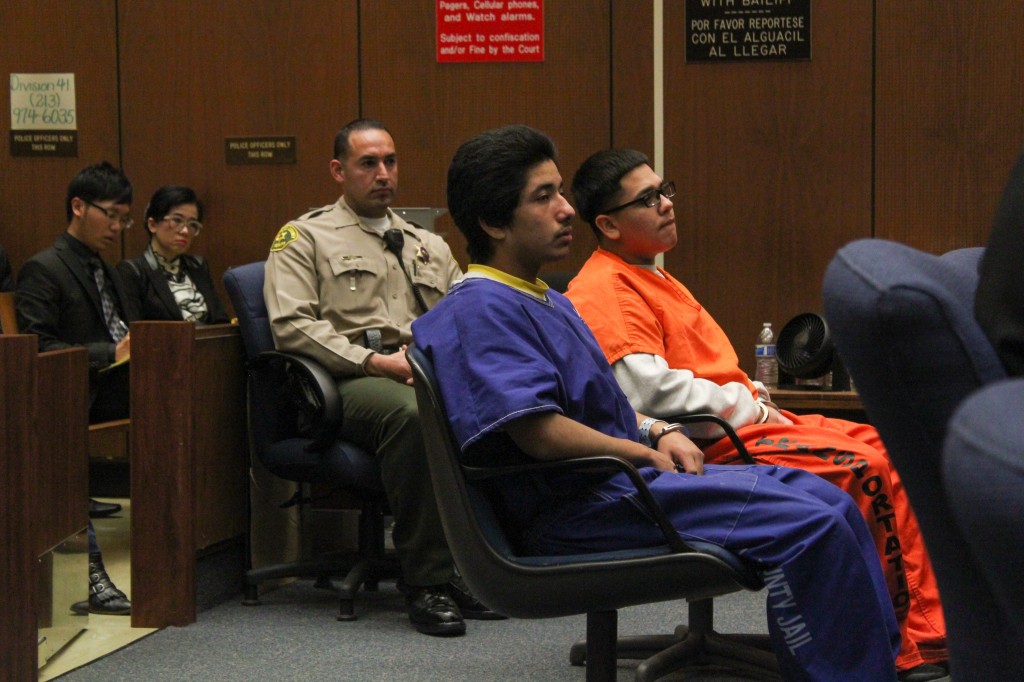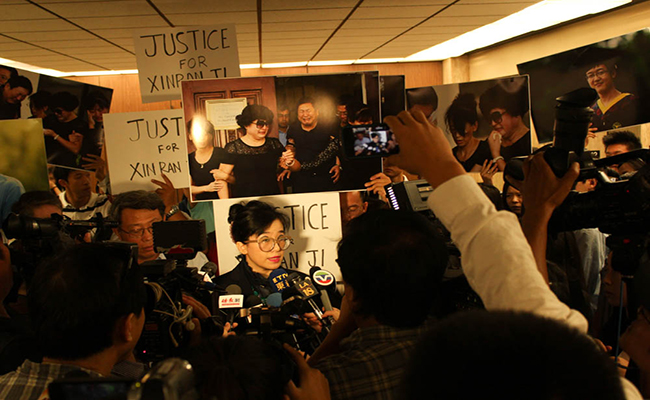
Street view of the crime scene a week after Xinran Ji’s murder. | Alex Zelenty (Neon Tommy)
By Diana Crandall, Benjamin Dunn and Michelle Toh
The sporadically lit streets just north of campus are unassuming and benign, even after midnight falls. Faint laughter and the pulse of radios from security ambassadors can be heard throughout the spider web of USC housing on Thursday nights, an evening routinely celebrated with cocktails and kegs.
But the yellow jackets on street corners are glittering, clicking heels of co-eds make the security blanket cloaking the campus even more dangerous. The façade allows students to discard the memory of a murder that took place in their own neighborhood just seven months ago, on a night just like this one.
Xinran Ji, 24, walked a friend home after studying on Thursday, July 24, 2014. It was just after midnight when a car carrying five teenagers profiled Ji as a prime robbery victim “because he was Chinese” and therefore “must have money,” they believed. Four of the five individuals got out of the car and proceeded to beat Ji with a metal baseball bat and wrench. Bleeding and delirious, Ji stumbled back to his campus apartment where he later died that same evening from blunt force trauma to his head and neck.
The savage nature of the beating does not match the temperate atmosphere of the block, which Annenberg Digital News returned to on February 26. The team walked Jefferson to Orchard, and back to Ji’s apartment complex at approximately 1 a.m. The walk included two security ambassadors standing in silent surveillance as several students drifted up and down the block, in and out of parties and residence halls.
When we arrived at Ji’s complex, we found a group of about 10 USC students hanging out on the front steps.
Daniel Lee and James Lee are USC sophomores and plan to live in Ji’s apartment complex next school year. They say knowing of Ji’s killing doesn’t deter them from moving into the building – in fact, both agreed that USC’s Department of Public Safety (DPS) makes them “feel safe,” and they aren’t worried for their safety.
It’s impossible to tell if Ji was concerned for his safety before he was attacked. It is true that DPS slashed the number of stationed security ambassadors in half for last summer semester. Following Ji’s death in July, Deputy Chief David Carlisle proclaimed that “nothing is off the table when it comes to student safety.” For a full list of safety upgrades, click here.
For more insight into the retracing of Ji’s last steps, please check out of video below.
Like Intersections on Facebook, follow us on Twitter and sign up for the Newsletter to stay in the loop on news and views from South L.A.

















